1. Spam Musubi
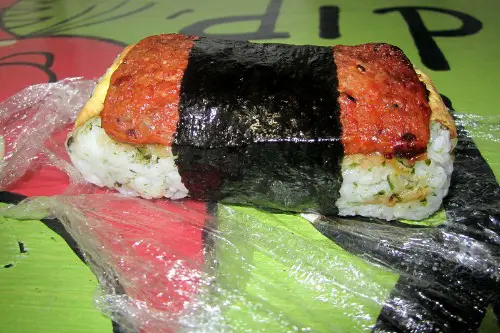
Hawaiians took a Japanese rice snack and made it their own by adding Spam, which was widely available during World War II. The salty canned pork was cheap and plentiful, but not exactly subtle on its own. Wrapping it with rice and seaweed balanced out the strong flavor while giving it a portable, picnic-ready vibe. It’s since become a beloved snack, but originally it was all about making Spam taste like something you’d actually crave.
Today, spam musubi is sold everywhere in Hawaii, from convenience stores to lunch counters. The rice helps soak up the salty richness of the meat. Soy sauce marinades and teriyaki glazes were later added to mellow the processed taste even more. What started as wartime necessity ended up as a local staple.
2. Chipped Beef on Toast
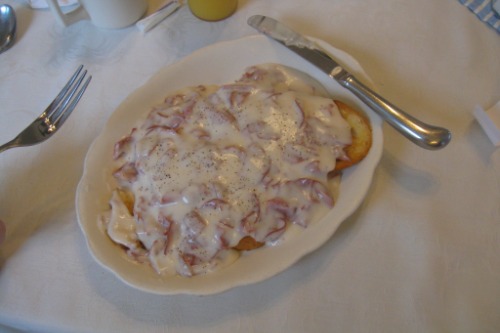
Known in the military as “SOS,” this dish came out of necessity when soldiers were served dried or canned beef. The problem was the meat tasted overly salty and tough on its own. Smothering it in a creamy white sauce and pouring it over toast turned it into something warm and filling. It was easier to get down when you weren’t chewing on pure canned beef.
The cream sauce softened the sharp edges of the preserved meat flavor. The toast added crunch and starch to balance it out. Military cooks leaned on it because it could be made quickly and cheaply in massive quantities. Even though it’s remembered with mixed feelings, it solved a real problem at the time.
3. Deviled Ham Spread

Canned deviled ham, sold in those iconic paper-wrapped tins, was popular in the late 1800s and early 1900s. The problem? Straight-up canned ham didn’t have much flavor beyond “salty.” Adding spices, mustard, and other seasonings helped disguise the monotony. Spreading it on crackers or bread made it seem less like preserved meat and more like a treat.
The “deviled” part refers to the heavy seasoning, which was the whole point. Without it, you’d just be eating bland ham paste. Families used it for sandwiches, and it was easy to pack for lunches or picnics. It turned an uninspiring product into something people willingly bought for flavor.
4. Spam Fried Rice

Leftover rice plus Spam became a match made out of pure practicality. The meat was affordable and long-lasting, but it was far too salty on its own. Cutting it into cubes and frying it with rice, soy sauce, and vegetables diluted that intensity. Suddenly, the canned pork tasted like it belonged in the pan.
Fried rice is already about stretching ingredients, and Spam fit perfectly into that mindset. Each bite gave you just enough meat without overwhelming the dish. The oil and aromatics helped tame the processed edges of the flavor. It’s no surprise it stuck around in home kitchens and diners alike.
5. Bologna Salad
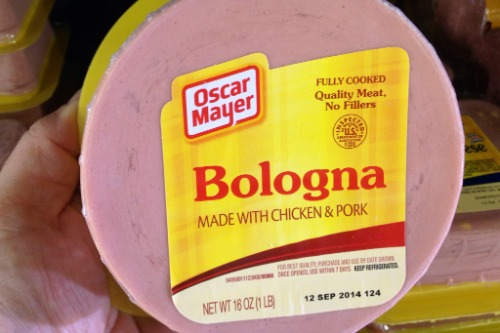
When sliced bologna was canned or pre-packaged, people needed a way to make it more interesting. Enter the bologna salad, where ground bologna was mixed with mayo, pickles, and onions. The creamy and tangy add-ins masked the one-note taste of processed meat. Spread onto bread or crackers, it was suddenly more of a party dip than a lunchbox filler.
This was especially popular in the Midwest, where thrifty cooks stretched ingredients into new dishes. The mayo softened the salty meat, while relish gave it a pop of sweetness. Grinding the bologna also disguised its texture, which was another giveaway that it was processed. It was a clever rebranding of what was basically just canned lunch meat.
6. Vienna Sausage Casserole
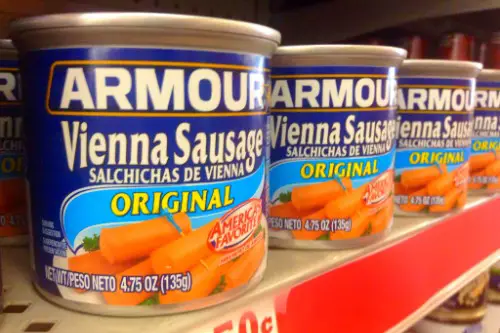
Vienna sausages were cheap, soft, and easy to stock, but their mushy texture and briny taste needed help. Enter casseroles, which hid them under layers of potatoes, cheese, or noodles. Baking them together muted the strong canned flavor while stretching one can to feed several people. It was less about showcasing the sausages and more about making them tolerable.
Families would slice the sausages into coins so they’d disappear into the dish. That way, every bite had just a hint of meat without overwhelming the palate. Canned soups and breadcrumbs often joined the mix to bulk it up. What could’ve been a disappointing dinner became a comforting, hearty bake.
7. Ham Salad
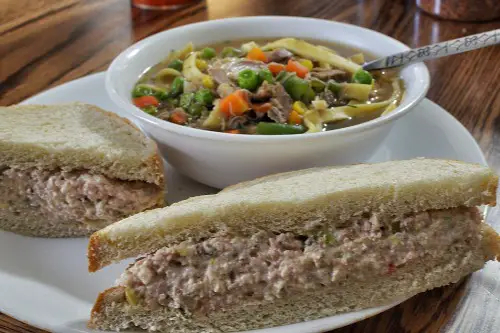
Much like bologna salad, ham salad was born from the need to repurpose canned or leftover ham. Cooks chopped it finely and mixed it with mayo, mustard, and pickle relish. The tangy and creamy dressing disguised the tinny aftertaste of preserved ham. Spread onto bread, it became a budget-friendly sandwich filler.
This dish was a go-to during leaner times, especially in the mid-20th century. The chopped texture helped hide that the ham wasn’t freshly carved. Relish and mustard brightened up what would otherwise be flat-tasting meat. It turned something uninspired into a staple lunch option.
8. Sloppy Joes

Ground beef, especially during the Depression and wartime, often came canned. Eaten plain, it wasn’t exactly a crowd-pleaser. Adding tomato sauce, onions, and spices transformed it into a messy, saucy sandwich. The seasonings covered the metallic aftertaste and gave it an entirely new identity.
The sweetness of ketchup and tang of vinegar worked magic here. Instead of eating a spoonful of canned beef, families got a meal kids would actually enjoy. The bun also helped soften the experience, balancing the rich filling. It was economical, but it also felt indulgent.
9. Spam and Eggs

Breakfast was another clever way to disguise canned meat. Frying Spam alongside eggs made the meal feel balanced and hearty. The eggs mellowed out the saltiness, and the crispy sear on the Spam changed its texture. Suddenly, it wasn’t a block of processed meat—it was part of a diner-style breakfast.
This combination became especially common during WWII and afterward. The meat was easy to store, and eggs stretched the protein without needing more meat. Cooking Spam in a skillet also gave it a smoky flavor that wasn’t there in the can. Pairing it with toast and coffee made it feel like a complete morning ritual.
10. Corned Beef Hash

Canned corned beef was a wartime staple, but straight from the tin it was chewy and salty. Chopping it up and frying it with potatoes gave it a second life. The crispy edges of the hash masked the mushiness of the meat. Potatoes also cut the saltiness, making it more palatable.
This dish became a breakfast classic because it was cheap, filling, and quick. Eggs on top gave it even more balance and richness. The combination was comforting and hearty enough to win over skeptics. Without potatoes, corned beef might never have stuck around in American kitchens.
11. Hot Dish with Spam
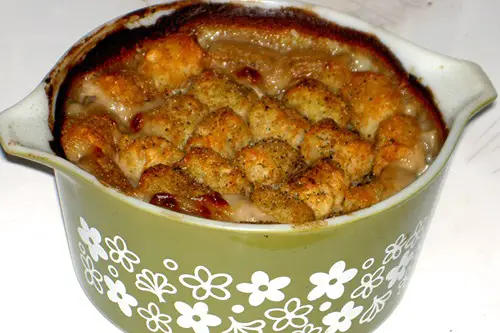
In the Midwest, hot dishes became a one-pan solution to stretch ingredients. Adding Spam cubes into a creamy casserole helped hide the processed taste. Pasta, vegetables, and canned soup gave it texture and flavor that Spam alone lacked. The meat became just another piece of the puzzle instead of the star.
This dish reflects a frugal, practical cooking style. You could feed a family without anyone feeling like they were just eating canned pork. The seasoning from the sauce masked Spam’s saltiness. By the time it came out of the oven, the meat felt like it belonged.
12. Tuna Noodle Casserole

Canned tuna had the same problem as canned meats: it was strong and a little fishy. Baking it into a creamy noodle casserole was the solution. The egg noodles, mushroom soup, and crispy topping made it cozy and balanced. The tuna became background flavor rather than the main event.
This dish was especially big in the 1950s, when convenience foods were booming. It stretched a can of tuna into a meal for the whole family. The creamy sauce covered up the metallic taste while still giving you protein. It turned an otherwise uninspired ingredient into comfort food.
13. Potted Meat Sandwiches
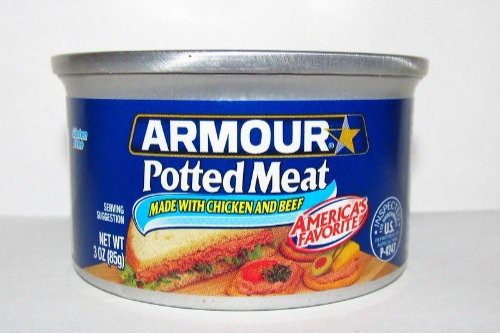
Potted meat, a canned paste made from various scraps, was never delicious on its own. Spreading it on bread with mustard or pickles made it edible. The condiments did the heavy lifting to hide the bland, salty taste. Sandwiches made it feel less like eating meat paste and more like a quick lunch.
During the early 20th century, this was a popular working-class meal. The bread and toppings disguised both the flavor and texture. With the right extras, people barely noticed the potted meat itself. It was survival food turned into something passable.
14. Spam Tacos
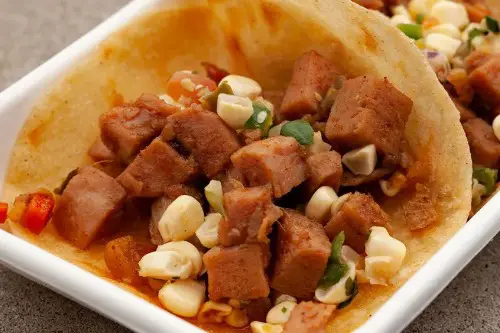
When Spam made its way into Mexican-American kitchens, tacos became the perfect disguise. Frying the meat in spices gave it a new personality. The tortillas, salsa, and toppings distracted from its canned origins. In a taco, Spam became almost unrecognizable.
This dish shows how adaptable Spam really was. It went from being a ration food to something you could serve with pride. The seasonings transformed its salty punch into something bold and flavorful. Without the taco format, Spam might have stayed a breakfast-only item.
This post 14 American Recipes That Were Invented to Hide the Taste of Canned Meat was first published on American Charm.


